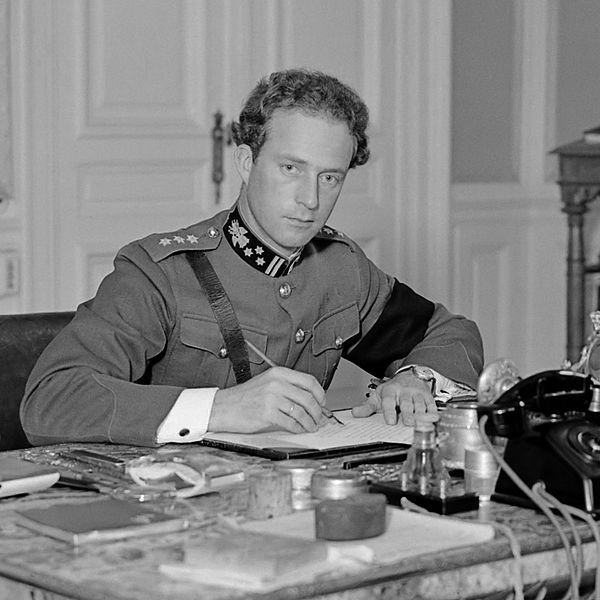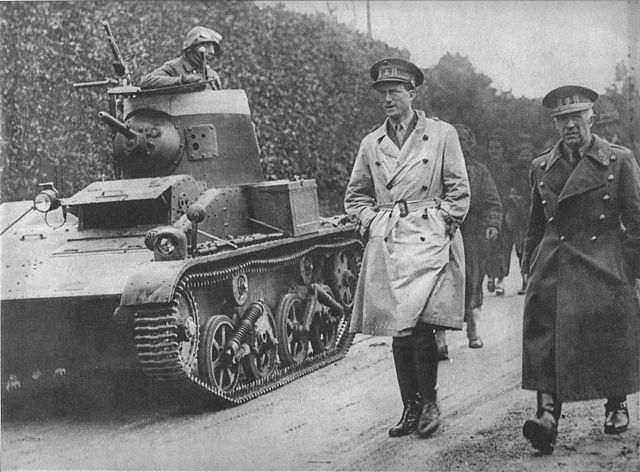The T-13 was a tank destroyer in use with the Belgian armed forces before World War II and during the Battle of Belgium. It was designed by Vickers-Armstrong, and produced by Vickers, Miesse and Familleheureux and outfitted with armament from Fonderie Royale de Canons Herstal. The earlier T-13s were based on imported Vickers tracked vehicles that were outfitted with armament and armor in Belgium by the Miesse company; later versions, from the B3 version on, were fully license-produced in Belgium by the Familleheureux factory. Total production numbers are unclear and have been underestimated for political reasons, both before and after World War II, but are generally estimated at 300 vehicles, although not all were available or fully outfitted on 10 May 1940, the start of the Battle of Belgium. Nazi Germany used the vehicles after the occupation of Belgium, but to what extent remains unclear.
T-13 B2 fording a creek during field exercises
A Vickers-Carden-Loyd Light Tank Mk. II B
Two German soldiers looking at a captured T13 B3
Confiscated Waffen-SS T-13 B3 somewhere in Belgium or northern France
German invasion of Belgium (1940)
The invasion of Belgium or Belgian campaign, often referred to within Belgium as the 18 Days' Campaign, formed part of the larger Battle of France, an offensive campaign by Germany during the Second World War. It took place over 18 days in May 1940 and ended with the German occupation of Belgium following the surrender of the Belgian Army.
Belgian soldiers under German guard following the fall of Fort Eben-Emael on 11 May 1940
A pacifist rally in Heysel, near Brussels, in 1936
King Leopold III, Belgian head of state, an advocate of the policy of neutrality
Leopold III, Belgium's monarch from 1934, reviewing Belgian troops in early 1940








